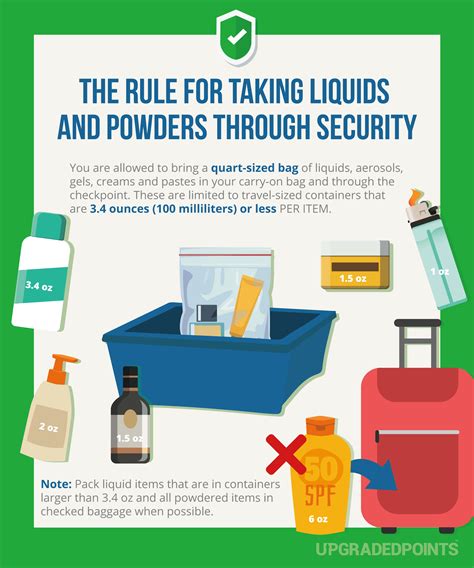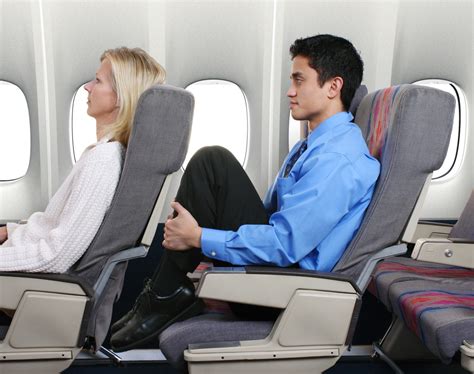
The Transportation Security Administration (TSA) is pressing airlines to enforce existing carry-on size restrictions more consistently and transparently, aiming to reduce checkpoint delays and improve the passenger experience by minimizing hidden or unexpected baggage fees.
Airlines are facing increased pressure from the TSA to strictly adhere to carry-on size limitations and eliminate hidden baggage fees, moves designed to streamline the security screening process and enhance passenger satisfaction. The initiative emphasizes the importance of clearly communicating baggage policies to passengers before they arrive at the airport, preventing last-minute gate checks and unexpected charges.
The TSA’s renewed focus on carry-on compliance stems from concerns that inconsistent enforcement of size restrictions and opaque fee structures are contributing to congestion at security checkpoints and negative passenger experiences. “TSA is now taking a more active role in ensuring that airlines clearly communicate their carry-on baggage policies to passengers,” a TSA official stated. This push involves working with airlines to reinforce existing size limitations and ensure that passengers are fully aware of potential fees for oversized or overweight bags before arriving at the airport.
The core issue lies in the disparity between airlines’ stated carry-on policies and their actual enforcement. While most airlines publish size and weight restrictions for carry-on bags, these rules are not always consistently applied. This inconsistency can lead to situations where passengers are forced to check their bags at the gate, incurring unexpected fees and causing delays for both themselves and other travelers. “The goal is to create a more transparent and predictable travel experience for passengers,” the TSA official added.
This increased scrutiny comes at a time when air travel is experiencing a resurgence, with passenger volumes nearing pre-pandemic levels. The TSA is keen to avoid bottlenecks at security checkpoints, which can be exacerbated by passengers struggling with oversized carry-on bags or disputing baggage fees. By ensuring that airlines enforce their carry-on policies more consistently, the TSA hopes to reduce the number of bags that need to be checked at the gate, thereby speeding up the boarding process and minimizing delays.
The TSA’s intervention also addresses the growing concern over hidden fees in the airline industry. In recent years, airlines have increasingly relied on ancillary fees, such as baggage charges, seat selection fees, and change fees, to boost their revenue. While these fees are often disclosed on airline websites, they are not always clearly communicated to passengers during the booking process. This lack of transparency can lead to frustration and resentment, particularly when passengers are hit with unexpected charges at the airport.
To address this issue, the TSA is working with airlines to improve the clarity and accessibility of their baggage fee information. This includes encouraging airlines to prominently display their carry-on size and weight restrictions on their websites and mobile apps, as well as providing clear explanations of any fees that may apply for oversized or overweight bags. The TSA is also urging airlines to train their staff to consistently enforce these policies and to handle disputes with passengers in a fair and transparent manner.
The success of this initiative will depend on the cooperation of airlines, many of whom have resisted previous attempts to regulate baggage fees. Airlines argue that they need the flexibility to adjust their fees in response to market conditions and competitive pressures. However, the TSA is emphasizing that clear and consistent communication of baggage policies is in the best interest of both passengers and airlines. By reducing confusion and frustration, airlines can improve customer satisfaction and build loyalty.
Furthermore, this initiative aligns with broader efforts by the U.S. Department of Transportation (DOT) to increase transparency and consumer protection in the airline industry. The DOT has recently proposed new rules that would require airlines to disclose all fees upfront, including baggage fees, seat selection fees, and change fees. These rules are designed to give passengers a more complete picture of the total cost of their air travel, allowing them to make more informed decisions.
The TSA’s focus on carry-on compliance is a welcome step for many travelers who have long complained about inconsistent enforcement and hidden fees. By working with airlines to improve transparency and consistency, the TSA can help to create a more pleasant and predictable travel experience for everyone. However, the ultimate success of this initiative will depend on the willingness of airlines to embrace these changes and prioritize the needs of their passengers.
In-Depth Analysis
The TSA’s proactive stance on carry-on baggage policies reflects a broader trend towards enhancing the overall passenger experience while maintaining security standards. The agency’s approach is multifaceted, addressing not only the physical dimensions of carry-on luggage but also the often-opaque fee structures that can lead to passenger dissatisfaction.
Historical Context
Historically, the enforcement of carry-on size restrictions has been inconsistent across different airlines and even within the same airline at different airports. This inconsistency has been a source of frustration for travelers who often find themselves subject to arbitrary enforcement, leading to unexpected gate checks and fees. Airlines, on the other hand, have argued that they need the flexibility to manage cabin space and ensure the safety and comfort of all passengers.
However, the lack of a standardized approach has created a system where some passengers are able to bring oversized bags onboard, while others are penalized for bags that are only marginally larger than the stated limits. This inconsistency not only creates resentment but also contributes to delays as gate agents struggle to manage the boarding process.
Economic Impact
The economic impact of carry-on baggage policies is significant for both airlines and passengers. For airlines, baggage fees have become a major source of revenue, contributing billions of dollars to their bottom line each year. According to the Bureau of Transportation Statistics, U.S. airlines collected over $5 billion in baggage fees in 2019, prior to the pandemic. While these fees can help airlines offset operating costs, they can also be a source of negative publicity if they are perceived as being unfair or hidden.
For passengers, unexpected baggage fees can add a significant cost to their travel expenses. A recent survey found that nearly one in four travelers have been hit with unexpected baggage fees, with the average fee being around $50. These fees can be particularly burdensome for families traveling with young children or for passengers on a tight budget.
Operational Efficiencies
The TSA’s focus on carry-on compliance is also driven by the need to improve operational efficiencies at security checkpoints. Oversized carry-on bags can slow down the screening process as TSA officers need to spend more time inspecting them and ensuring that they do not contain prohibited items. In some cases, oversized bags may need to be checked, further delaying the screening process.
By reducing the number of oversized bags that need to be screened, the TSA can speed up the screening process and reduce wait times for passengers. This is particularly important during peak travel periods, when security checkpoints can become overcrowded and congested.
Regulatory Landscape
The regulatory landscape surrounding airline baggage fees is complex and evolving. While the DOT has the authority to regulate airline fees, it has traditionally taken a hands-off approach, allowing airlines to set their own fees as long as they are clearly disclosed to passengers.
However, in recent years, the DOT has become more active in addressing concerns about hidden fees and lack of transparency. The agency has proposed new rules that would require airlines to disclose all fees upfront, including baggage fees, seat selection fees, and change fees. These rules are designed to give passengers a more complete picture of the total cost of their air travel, allowing them to make more informed decisions.
The TSA’s focus on carry-on compliance can be seen as a complementary effort to the DOT’s regulatory initiatives. By working with airlines to improve the clarity and consistency of their baggage policies, the TSA can help to create a more transparent and predictable travel experience for passengers.
Technological Solutions
Technology can play a key role in improving carry-on compliance. Some airlines are experimenting with using sensors and cameras to automatically measure the size and weight of carry-on bags. These systems can help to identify oversized bags before they reach the gate, allowing passengers to check them in advance and avoid unexpected fees.
Mobile apps can also be used to provide passengers with real-time information about carry-on policies and fees. These apps can also allow passengers to measure their bags using their smartphone’s camera, ensuring that they meet the airline’s size restrictions.
Stakeholder Perspectives
The TSA’s initiative has been met with mixed reactions from various stakeholders. Airlines have generally been cautious, emphasizing the need for flexibility in managing their baggage policies. Passenger advocacy groups have welcomed the initiative, arguing that it will help to reduce confusion and frustration for travelers.
Travel industry experts have also weighed in on the issue, with some arguing that a more standardized approach to carry-on policies is needed, while others believe that airlines should be allowed to set their own rules as long as they are clearly disclosed to passengers.
Future Implications
The long-term implications of the TSA’s initiative remain to be seen. However, it is clear that the agency is committed to improving the passenger experience and ensuring that airlines are transparent about their baggage policies.
If the initiative is successful, it could lead to a more standardized approach to carry-on policies across the airline industry. This would make it easier for passengers to understand the rules and avoid unexpected fees. It could also lead to more efficient operations at security checkpoints, reducing wait times and improving the overall travel experience.
However, the success of the initiative will depend on the cooperation of airlines, many of whom have resisted previous attempts to regulate baggage fees. Airlines will need to be willing to invest in technology and training to ensure that their staff consistently enforce their carry-on policies. They will also need to be transparent about their fees and ensure that passengers are fully aware of the potential costs before they arrive at the airport.
Global Comparison
The issue of carry-on baggage policies is not unique to the United States. Airlines around the world have different rules and regulations regarding the size and weight of carry-on bags. Some countries have more stringent regulations than others, while others have a more lenient approach.
In Europe, for example, the European Aviation Safety Agency (EASA) has issued guidelines for carry-on baggage, but individual airlines are still allowed to set their own rules. This has led to a situation where passengers flying on different airlines may be subject to different carry-on restrictions.
In Asia, many airlines have stricter carry-on policies than those in the United States. For example, some airlines in Japan and South Korea have weight limits for carry-on bags that are lower than those typically found in the United States.
Conclusion
The TSA’s initiative to enforce carry-on limits and eliminate hidden fees represents a significant step towards improving the passenger experience and promoting transparency in the airline industry. By working with airlines to improve the clarity and consistency of their baggage policies, the TSA can help to reduce confusion and frustration for travelers. However, the ultimate success of this initiative will depend on the willingness of airlines to embrace these changes and prioritize the needs of their passengers. The effort will likely require a combination of regulatory pressure, technological innovation, and stakeholder collaboration to achieve its goals. The coming months and years will reveal the extent to which this initiative reshapes the airline travel experience for passengers across the United States. The balance between airline revenue generation and passenger satisfaction remains a critical point of contention, and the TSA’s actions aim to strike a more equitable balance. The global context of varying airline regulations further underscores the complexity of standardizing baggage policies, but the potential benefits of such standardization, in terms of efficiency and passenger clarity, are considerable.
Frequently Asked Questions (FAQ)
1. Why is the TSA focusing on carry-on baggage policies now?
The TSA is focusing on carry-on baggage policies to reduce checkpoint delays, improve passenger experience, and ensure airlines clearly communicate baggage policies to passengers. Inconsistent enforcement of size restrictions and opaque fee structures contribute to congestion and negative travel experiences, prompting the TSA to take a more active role.
2. What are the specific carry-on size restrictions that airlines must enforce?
Airlines have their own specific size and weight restrictions for carry-on bags, which are typically published on their websites. However, the standard maximum dimensions for a carry-on bag are generally around 22 inches x 14 inches x 9 inches (56 cm x 36 cm x 23 cm), including wheels and handles. Passengers should check with their specific airline for exact dimensions and weight limits.
3. How will the TSA ensure that airlines comply with the new carry-on guidelines?
The TSA is working with airlines to reinforce existing size limitations and ensure passengers are aware of potential fees for oversized or overweight bags before arriving at the airport. This involves improving the clarity and accessibility of baggage fee information, training staff to consistently enforce policies, and handling disputes with passengers transparently.
4. What can passengers do to avoid unexpected baggage fees?
Passengers can avoid unexpected baggage fees by:
- Checking the airline’s carry-on size and weight restrictions before packing.
- Using a luggage scale to ensure their bag meets the weight limit.
- Consolidating items to fit within the carry-on limits.
- Being aware of the airline’s baggage fee policies and any potential charges for oversized or overweight bags.
- Considering shipping items to their destination if they exceed carry-on limits.
5. How does this initiative relate to the DOT’s efforts to increase transparency in airline fees?
The TSA’s focus on carry-on compliance aligns with the DOT’s broader efforts to increase transparency and consumer protection in the airline industry. The DOT has proposed rules requiring airlines to disclose all fees upfront, including baggage fees, seat selection fees, and change fees. The TSA’s initiative complements these efforts by ensuring clear and consistent communication of baggage policies, contributing to a more transparent and predictable travel experience for passengers.









